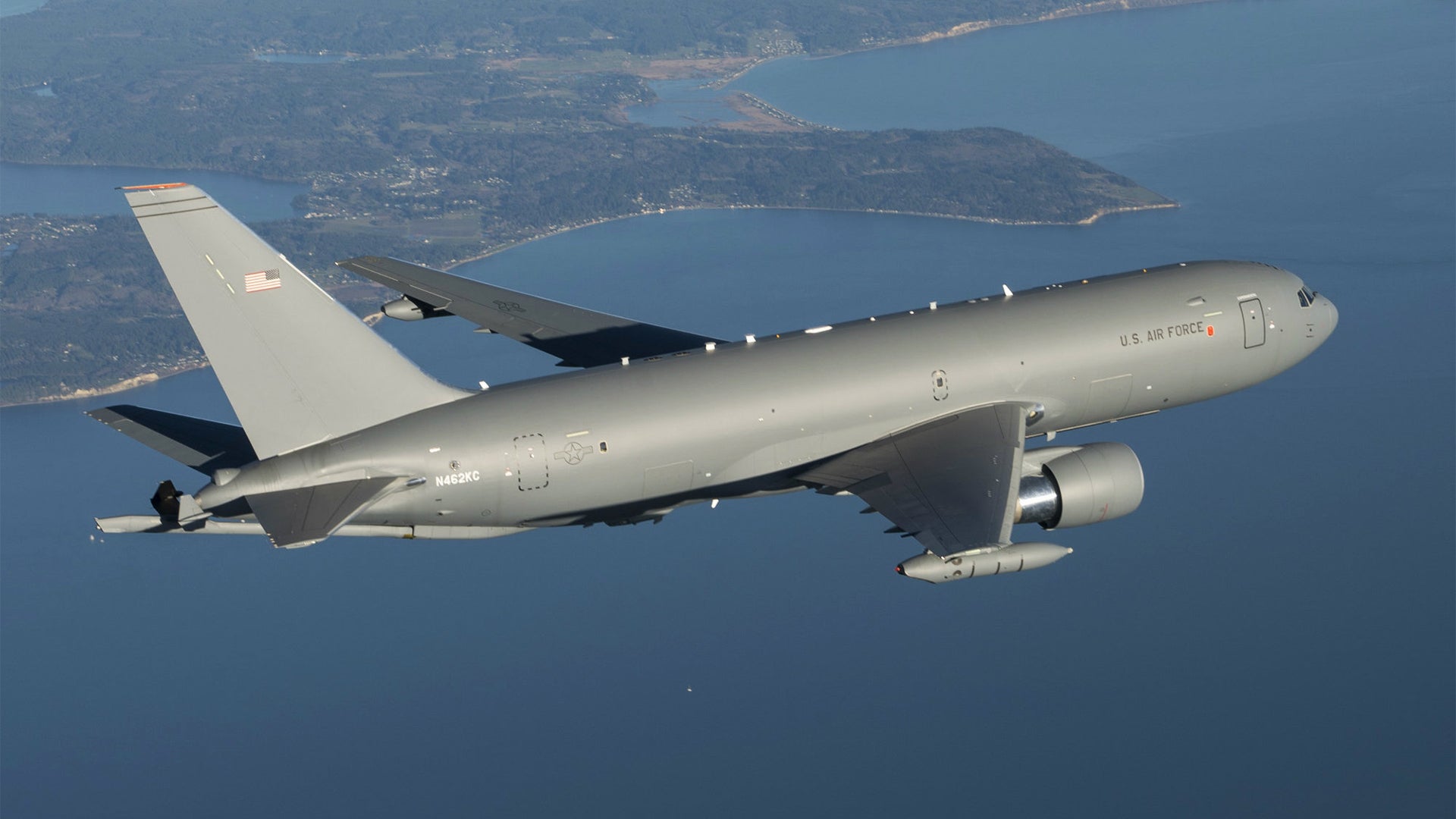After the sad end to Friday evening’s flight of a stolen Q400, Rock 41 and Rock 42—the Oregon Air National Guard F-15Cs that intercepted Richard Russell as he flew aggressively around the Tacoma area—had to figure out where they would get gas to stay aloft. The alert tanker that launches out of Fairchild Air Force Base in Spokane during scrambles hadn’t gotten airborne yet, and after a supersonic, low-level race from Portland, even the Eagle with its generous endurance would soon need gas soon or have to land. Monitoring the event over the airwaves were a pair of Boeing KC-46 Pegasustankers that were on a test flight nearby that offered a somewhat unconventional helping hand.
As the F-15s checked in to state their dwindling fuel status, the Seattle Center controller notes that the KC-46s are holding nearby and have called in to say that they are capable of refueling F-15s and are offering to do so on the fly. Still, actually executing such a plan would be something of an experimental affair as F-15 fleet pilots have never tanked from a KC-46 before. The program has been beset by delays and cost overruns, with hopes being that the first examples will finally get delivered to USAF flight-lines this Fall.

The Eagles, which had about 30 to 40 minutes of gas left according to the lead pilot, said that the KC-135 tanker out of Fairchild AFB in Spokane, callsign GASMAN 04, had just launched and was headed their way. As such, they wouldn’t need the KC-46’s help. But if this incident had been ongoing, and a KC-135 wasn’t able to get airborne quick enough, it is hard to imagine that the Eagle Drivers wouldn’t have taken the KC-46 crews up on their creative offer. And to our knowledge, it would have been the first operational refueling for the Pegasus.
Listen to the complete audio recording here. The part about the KC-46s starts at around 10:15 in.

Above all else, this audio is a reminder of how the skies are a helpful place. Pilots, in general, love the community they are a part of. It is a unique family and when somebody needs help everyone in the airspace is usually ready and waiting to pitch in.
On another note, I always get a ton of questions about why the 142nd Fighter Wing are called to intercept aircraft around Seattle and why fighters out of McChord AFB or Naval Air Station Whidbey Island aren’t used. The very simple answer is that there are no fighters based in Washington that sit alert and have pilots trained in this very specific mission set.
There are no fighters stationed at McChord AFB and Whidbey Island’s EA-18Gs are air-to-air capable only with the AIM-120 AMRAAM for defensive purposes. In other words, Portland’s alert F-15s, which commonly include two jets and a spare—all fully armed—as well as another aircraft with its cannon loaded that can be launched in a pinch, cover all the airspace from the northern reaches of California to British Columbia.
You can read more about the 142nd Fighter Wing’s readiness here and a video of a practice intercept by the unit’s F-15s is also posted below. The complete post can be found here.
The rest of the recording is highly interesting as well as it is rare we get to hear the F-15 pilots on the radio as they use UHF, and in rarer cases, encrypted communications. At the start of the video we hear the aftermath of the crash, and at the end, we hear the lead F-15 pilot working to intercept the tanker between Seattle and Everett.
A huge thanks to our good friend @thenewarea51 for pointing out this interesting set of details.
Contact the author: Tyler@thedrive.com
